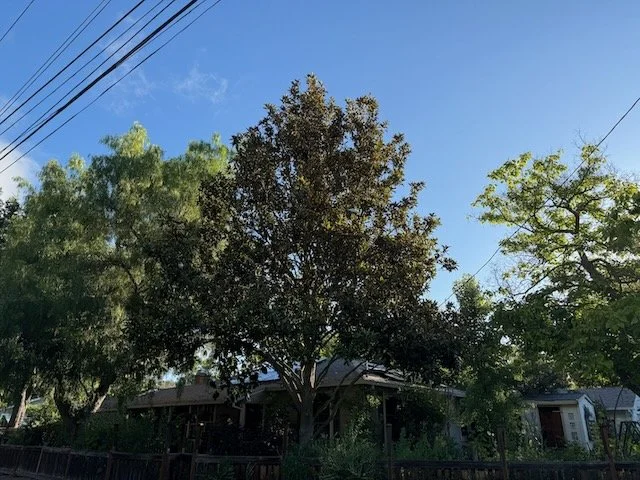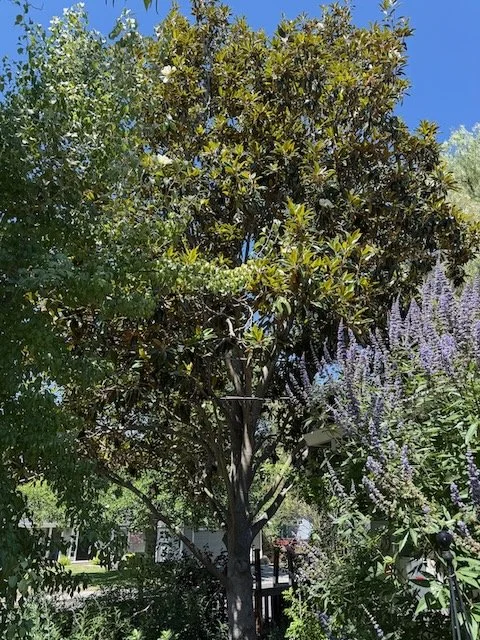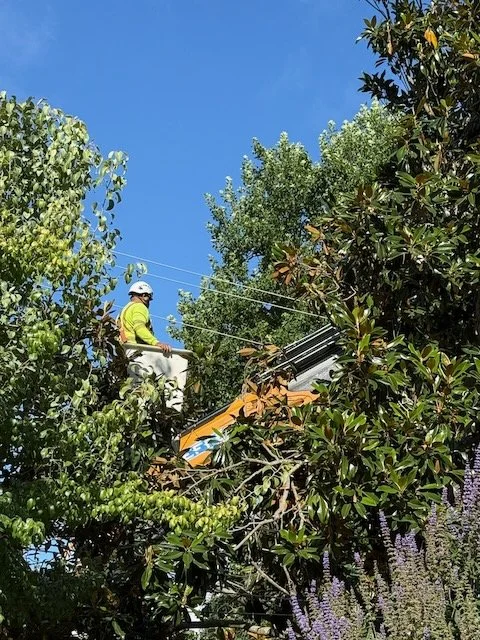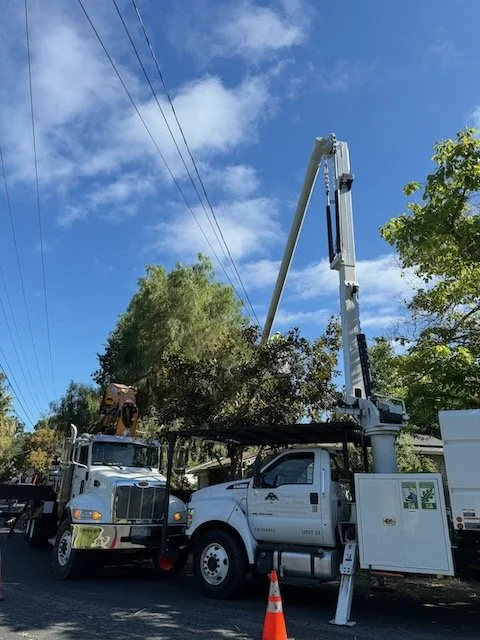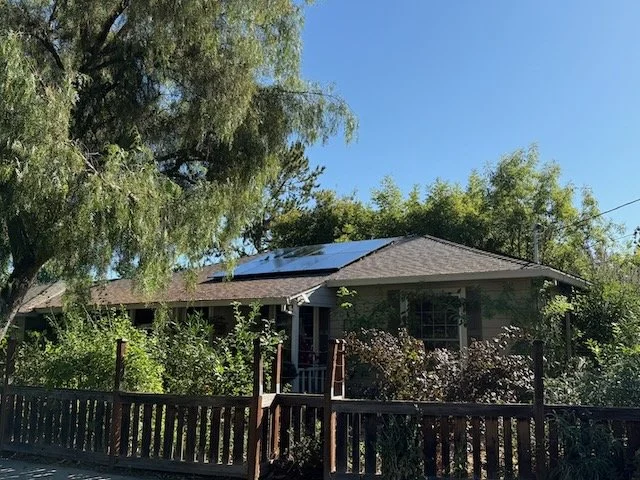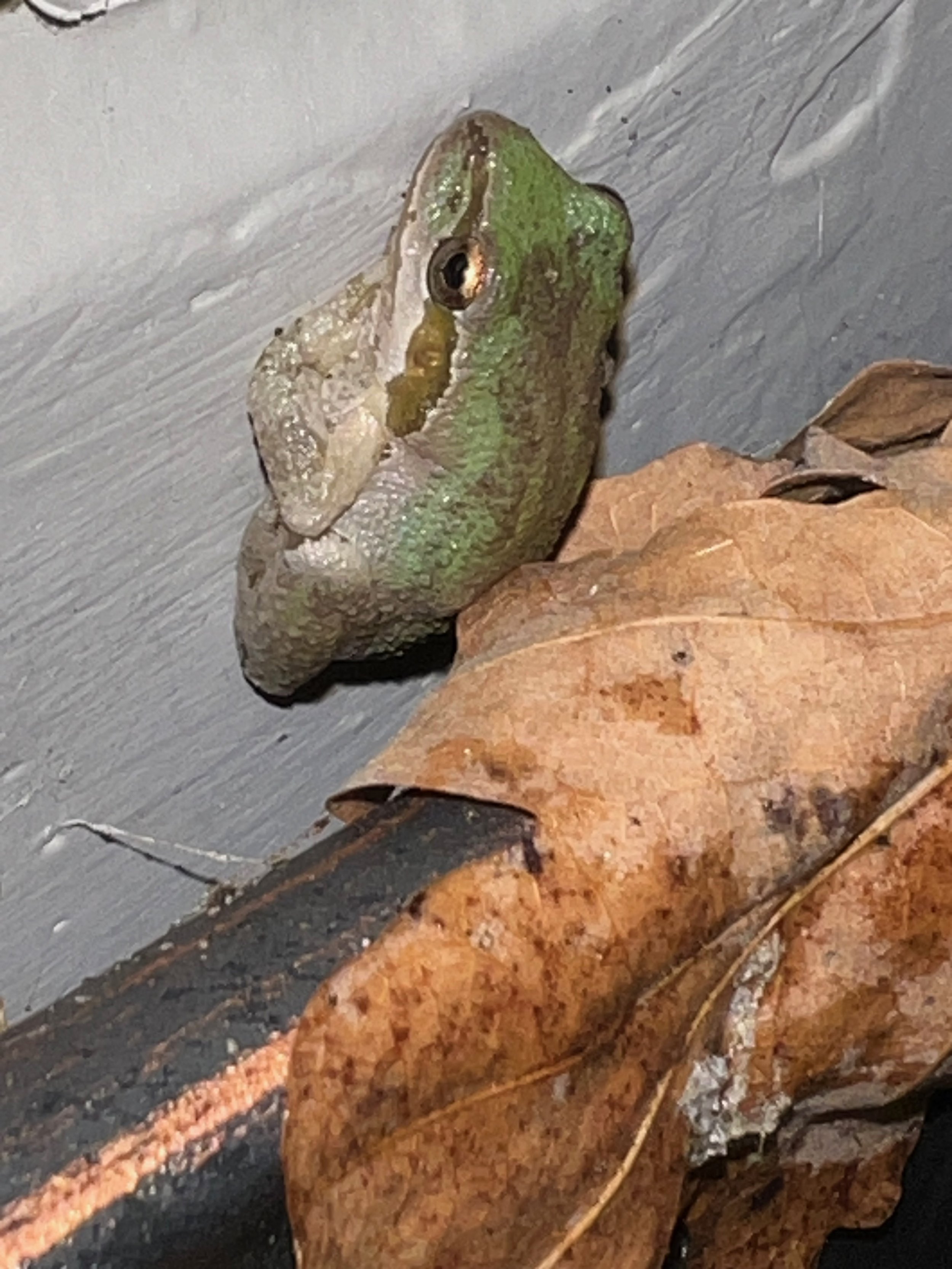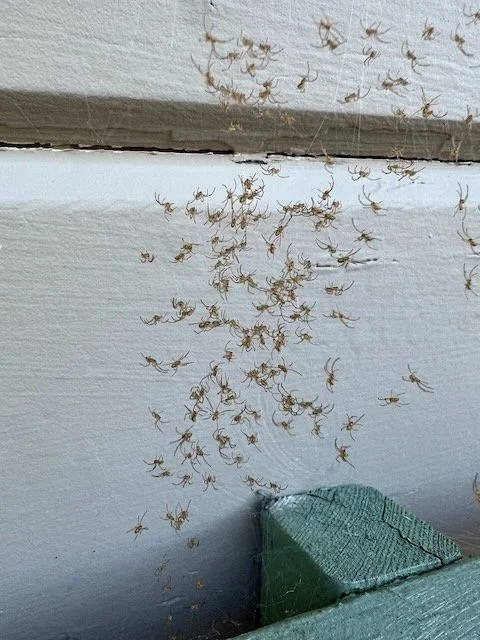Normally, we’re all about planting trees here at Poppy Corners. In the last 20 years, we’ve planted nearly 30 of them on this 7,000 sq ft property, most of them smaller in stature (and pruned to keep them that way). But there were three large trees here when we moved in: A valley oak, a catalpa, and a southern magnolia. I’ve written extensively about the oak (here, and here, and here, among others); we absolutely love it and so does all the wildlife that feed and shelter in its canopy. The catalpa is also lovely, providing bees with a feast when it blooms in late May, and arching gracefully with enormous heart-shaped leaves and foot-long seed pods.
But the magnolia (Magnolia grandiflora)? Seriously mixed feelings.
First, the good. In general, magnolias can be beautiful trees. They have an attractive white bark, and large leathery leaves that are dark green on top and rust-colored on the bottom. The huge white flowers sit like lily pads on top of the dark leaves, making a lovely contrast. The seed pods are interesting, with bright red ‘beads’ set into a corn-shaped husk.
Specifically, our tree is certainly beautiful most of the year (it always looks a little peaked after blooming, but only for about a month or so). Its sturdy branches held a swing when the kids were little and the tree saw a lot of action, as it was also very climbable, limbs conveniently and regularly spaced. It provides good shade and is a good shield from western sun on hot summer afternoons. Its roots are polite, only marginally displacing the sidewalk.
And, it’s old. Historical, even. We are not sure, but since there are many of these trees in the neighborhood, we think they were planted when the houses were built in 1949.
These good things, though, pale next to the long list of not-so-good things about this tree. It’s weak-limbed, and branches fall down in both wind and heavy rain, often taking out cable lines running to our home from the street. No birds ever nested in its branches, and no bees ever foraged for nectar or pollen in its blooms. I never saw anything eat its seeds. Its shade is deep and dark, rather than dappled. It blocks the sun from our solar panels.
It’s also native to the Southeastern United States, and prefers high humidity in summer. Since it doesn’t get that here in arid California, it sucks up a tremendous amount of water from the surrounding landscape. It’s just not climate-appropriate for this area.
And the leaves. Did I mention the leaves? Huge, tough, and leathery, the leaves never break down. And the tree, being evergreen, sheds them all year. There is a constant carpet of them on all the other plants in our landscape. They are buried in them. Once a month we need to hand-pick the leaves off other plants, and rake out the drifted dunes of them under, in, around, and on top of everything within 30 feet of it. The leaves don’t compost (at least not for years), so they have to go in the green bin. To my mind that means it’s wasted material. I can give some of them to the chickens but even their sharp claws and beaks are no match for the un-tearable fabric of these leaves.
Meanwhile, our remaining vegetable-growing area was receiving less and less sun. Especially afternoon sun, which is crucial for the ripening of summer crops like tomatoes and peppers. Our perennial herbs were also suffering, as was one of our main flower beds.
In short, the magnolia doesn’t improve things. It doesn’t provide what we want it to provide, while providing too much of things that are not useful. It’s a water hog. And ‘beauty’ is only one consideration in this garden, and it’s not the most important one.
So, every five years or so, on his annual visit to check out our trees, I’d get a quote from my guy to remove it. And every time, I just couldn’t pull the trigger. Who cuts down a mature tree in this CO2 crisis we’re living in? Who takes away shade when shade is desperately needed in cities?
Apparently we do.
Now, I had all sorts of feelings about this. Some were practical: Everything I had planted underneath this tree was intended for ‘dry shade.’ With the tree gone, would I be needing to re-plant this entire area? How much time would that require, and how much money would it cost? Would our bedroom (which was shaded by the tree) get super-hot in summer? Would we feel the lack of privacy its large leathery leaves had afforded us?
And then other feelings were purely emotional. Before he left for work, Tom put his hand on the bark and thanked it; before the tree guys came, I went out and put my arms around it and cried.
But then the guys arrived and for the next hour I was positively riveted by their expertise and care. Cranes! Ropes! Huge branches going into huge chippers! I mean, I get the trees pruned every year or so, I’m no stranger to a good chipper, but watching enormous pieces of trunk go into that thing was mesmerizing!
I asked the guys to cut me some rounds from the trunk, so I could put them throughout the garden and we’d have part of the tree still with us. They graciously agreed.
The stump grinder got wheeled in; and then it was done.
No more tree.
I was glad I had called the solar-panel cleaners, because it was now painfully obvious that our panels were desperately in need of some care. We wondered what would happen when 1) they got more solar energy because the tree was gone and 2) they got more solar energy because they were cleaned. Let me tell you, our data showed a swift uptake in energy collection.
And now it’s just all about watching the light. How does it move, where does it move, how does the increased amount affect the garden and all my established plants? What needs to be transplanted elsewhere? What could be added? How does the removal affect the house and the temperature within it? What should replace the magnolia, if indeed we decide to replace it?
All of this will become clear over time, and we do intend to take a good amount of time before deciding. But it’s weird to have that hole in the landscape, when it has been here the whole time we have lived here. Removing a tree is not an easy thing.
